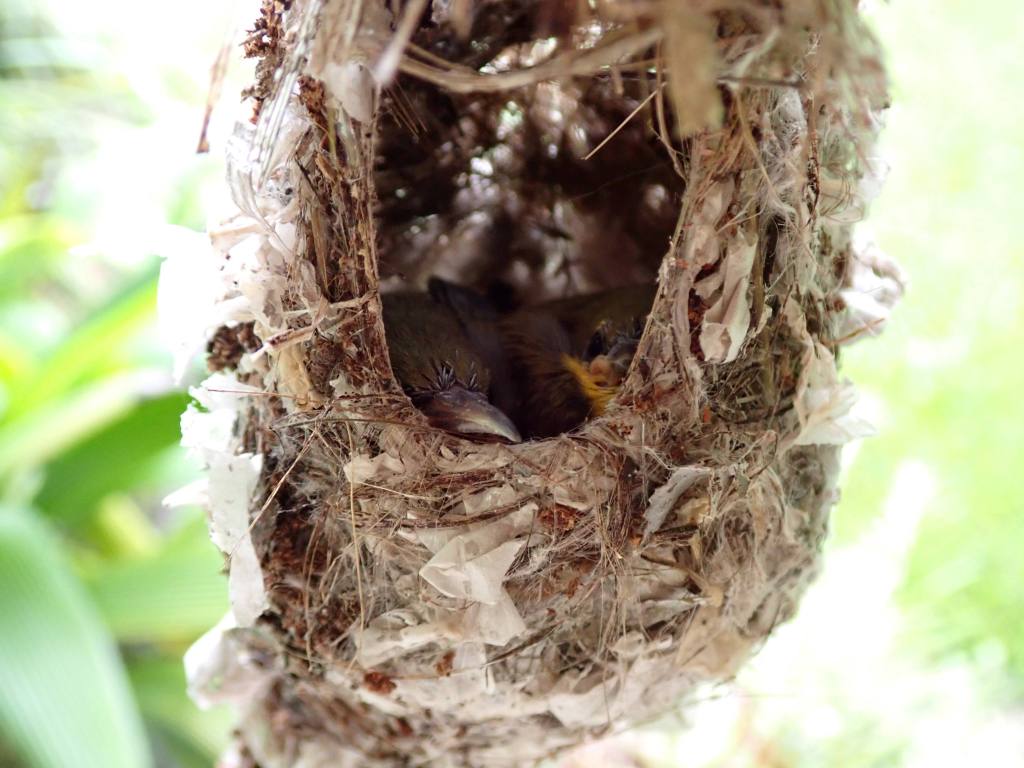
Thrixspermum platystachys
Thrixspermum (thrix-SPERM-um) J.de Loureiro 1790 platystachys (plat-ee-STACK-iss) (F.M. Bailey) Schlechter 1911.
From the Greek thrix – hair; sperma – seed. platystachys = from the Greek platys – flat; stachys – an ear of corn; alluding to the shape of the flower spike of this species.
Family name: Orchidaceae.
Other Names: Sarcochilus platystachys.
This is an unusual epiphytic orchid of tropical lowland rainforest and mangrove trees. The plants tend to be pendulous with thick glossy-green leaves but has few attached roots. They form, in stead a tangle of roots, leaves and stems that hang from a trunk or branch.

Thrixspermum platystachys - flower
They appear to favour well lit situations.
Here at Wildwings and Swampy Things Nature Refuge we have several plants that have attached themselves to some of our tropical fruit trees in our orchard. They seem happiest on rough bark ( Rambutan – Nephelium lappaceum) or decayed/ dead branches( Soursop – Annona muricata).
The plants produce odd looking flowering spikes which are persistant on the plant all year.
With flowering possible at any time.
I have patiently waited for one to flower so that I could photograph the flowers but seemed to miss them, only to find the shrivelled spent flowers on the ground below the plant.
That is until this week when I spotted one flowering while I was mowing. The flowers you see only last one day so you have to be constantly checking them.
Ironically when I had grabbed the camera to get a photo I discovered that two separate plants on different trees were flowering on the same day. Some weather event may well have encouraged them to action?
Unfortunately we have been having drizzly rain so the flowers were not at their best.

Thrixspermum platystachys - Flower spike.
I guess I will have to continue to watch and wait in the hope that I can get a better flower.
The fruiting body is also somewhat unusual in that they form a long bean-like pod (to 20cm) that protrude from the flower spike.
I am yet to see a dry one split and shed its millions of seeds.























